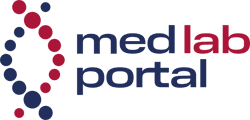Robotics in the laboratory: Successful integration of hybrid systems presented in Berlin clinic
At the German Congress of Laboratory Medicine (DKLM) 2025 in Leipzig, a study on the implementation of a hybrid robot system in a tertiary hospital laboratory was presented. The study sheds light on strategies to cope with staff shortages and growing diagnostic requirements through automation. Despite challenges such as limited space, infrastructural restrictions, incompatibilities with analyzers and information systems, high investment costs and the need for sensitive change management, the work shows potential for routine use.

The team from Labor Berlin Charitûˋ Vivantes GmbH and the Institute of Diagnostic Laboratory Medicine, Clinical Chemistry and Pathobiochemistry at Charitûˋ ã UniversitûÊtsmedizin Berlin describes an individualized robot system. Patient samples are registered and sorted before being manually placed in a preanalytical unit. There, two static robot arms take over centrifugation, decapping and placement in racks. A third dynamic, axis-guided robotic arm transports the racks between the pre-analytical unit, analyzers for clinical chemistry, hematology and hemostaseology, and an archiving unit.
The results are based on data from the second quarter of 2025 on routine working days. The proportion of processed patient samples is 70 percent in clinical chemistry, 72 percent in hematology and 73 percent in hemostaseology. The average processing throughput shows fluctuations throughout the day: In clinical chemistry and hematology, it increases in the morning and decreases in the afternoon, while hemostaseology shows a more stable course. The highest throughput is about 40 samples per hour in clinical chemistry at noon.
In summary, the presentation underlines the feasibility and strategic advantages of individual robot systems for laboratory diagnostics. Still, the lack of technical standardization requires tailored, labor-intensive adjustments. The involvement of the entire laboratory staff and careful change management are considered decisive factors for successful integration. The work emphasizes the need to establish robotics as a team member to increase efficiency and quality in routine.
Read Also:
DKLM 2025: Exclusive interview with Prof. Uta Ceglarek and Prof. Berend Isermann ã MedLabPortal
Editor: X-Press Journalistenbû¥ro GbR
Gender Notice. The personal designations used in this text always refer equally to female, male and diverse persons. Double/triple naming and gendered designations are used for better readability. ected.




